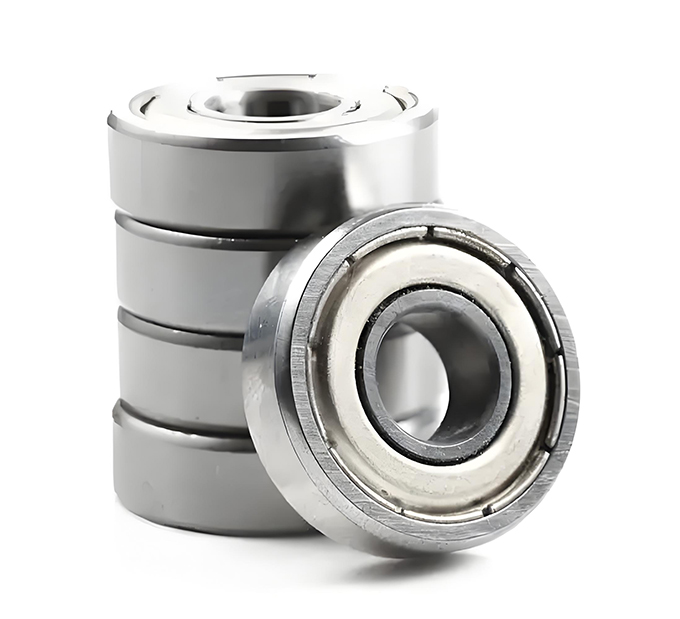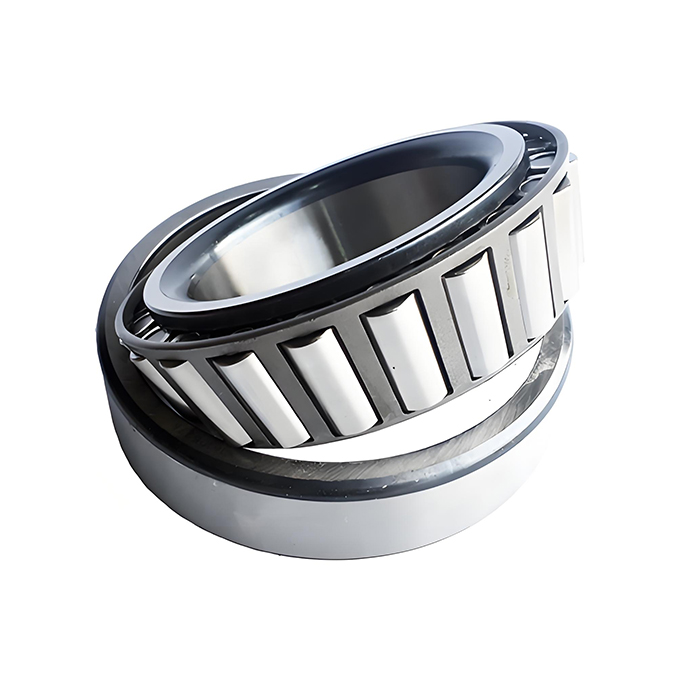Friction-Reducing Bearings in High-Speed Rotating Equipment: A Comprehensive Guide
In high-speed rotating equipment, friction not only accelerates wear and tear between components but also significantly impacts operational efficiency. However, many industrial purchasers often overlook friction reduction as a critical performance factor when selecting bearings. Friction-reducing bearings minimize rolling resistance, thereby extending equipment lifespan and enhancing overall performance. This guide provides a detailed overview of the classification, operating principles, selection guidelines, and application examples of low-friction bearings, helping you choose the appropriate bearing type based on specific application scenarios.

Περιεχόμενα
Low-friction bearings are a type of ρουλεμάν κύλισης that reduces friction by incorporating balls or rollers between moving surfaces. These bearings can withstand radial and axial loads while minimizing heat generation, energy loss, and component wear within mechanical systems.
– Inner ring: Mounted on the rotating shaft, it rotates with the shaft and transmits motion to the rolling elements.
-Outer ring: Installed on the fixed part of the bearing housing, serving as the raceway for the rolling elements.
-Rolling elements: Including steel balls, cylindrical rollers, tapered rollers, or spherical rollers, which roll between the inner and outer rings to reduce friction.
-Cage/separator: Evenly separates the rolling elements to prevent them from contacting each other, ensuring stable operation.
-Seals/dust covers: Protect internal components from dust and contaminants.
Each component plays a critical role in ensuring proper load distribution, rotational efficiency, and durability of the bearing. The design and structure of these components may vary depending on the specific application.
Friction-reducing bearings are suitable for high-speed, continuous operation environments with low maintenance requirements, while sliding bearings are suitable for low-speed, heavy-load, or oscillating applications.
Understanding the differences in rolling element geometry and load direction can help in selecting the appropriate bearing for mechanical equipment. Based on the shape of the rolling elements and application requirements, anti-friction bearings are primarily categorized into the following types:
– Ball bearings
– Rolling elements: Steel balls
– Load capacity: Moderate radial and axial loads
– Speed capability: High
– Common applications: Motors, gearboxes, pumps
– FRSZC products: Deep groove ρουλεμάνs, hub bearings
– Cylindrical ρουλεμάν
– Rolling elements: Cylindrical rollers
– Load capacity: High radial loads
– Speed capability: Medium to high
– Application scenarios: Industrial gearboxes, compressors
– FRSZC products: Single/double row cylindrical roller bearings
– Tapered ρουλεμάν
– Rolling elements: Tapered rollers
– Load capacity: Capable of withstanding both radial and axial loads
– Applications: Automotive hubs, railways, heavy equipment
– FRSZC products: Imperial and metric tapered roller bearings
– Spherical roller bearings
– Rolling elements: Drum-shaped rollers
– Key features: Double-row structure, strong self-aligning capability, capable of accommodating shaft misalignment
– Application scenarios: Wind turbines, mining equipment, metallurgical rolling mills
– FRSZC products: High-load spherical bearings suitable for renewable energy applications
– Needle roller bearings
– Rolling elements: Long, thin cylindrical rollers
– Key features: Withstands high loads in compact spaces
– Applications: Automotive transmissions, motorcycles, agricultural machinery
– FRSZC products: Needle roller bearings customized for automotive customers, meeting high precision and lightweight requirements
-Bearing Units
– Special Features: Integrated bearing and housing for easy installation
– User-Friendly: Plug-and-play design reduces assembly time
– Applications: Conveyors, food processing, agriculture
– FRSZC Products: UCP/UCF series bearing units

In industrial applications, selecting the right friction-reducing bearings not only affects equipment performance but also directly impacts maintenance costs, service life, and downtime risks. Choosing the wrong bearings may lead to failures or performance degradation. Here are key recommendations for selecting friction-reducing bearings:
– Load type
First, assess the type of load the bearing will承受. For larger radial loads, use cylindrical roller bearings or spherical roller bearings; for larger axial loads, use thrust ball bearings or tapered roller bearings; for combined radial and axial loads, recommend tapered roller bearings or angular contact ball bearings.
-Speed and Precision
For high-speed equipment such as motors and fans, choose bearings with low friction and smooth operation, such as ρουλεμάν με βαθύ αυλάκι or precision roller bearings; for equipment requiring extremely high rotational precision, such as CNC machines and automated equipment, select bearings with P5 or even P4 precision to ensure operational accuracy and consistency; For medium-to-low-speed, heavy-load equipment requiring high rigidity, cylindrical roller bearings or tapered roller bearings are more suitable.
-Shaft misalignment
During operation, equipment may experience shaft misalignment due to thermal expansion or structural displacement. In such cases, spherical roller bearings are recommended, as their spherical raceways can automatically compensate for misalignment, preventing premature bearing wear.
-Environmental Factors
Different operating environments have different requirements for sealing solutions. In dusty or humid environments, it is recommended to use rubber seals (2RS) or metal dust covers (ZZ) to prevent contaminants from entering and damaging the bearings.
For industries such as chemicals, food processing, and pharmaceuticals that require high temperature resistance, corrosion resistance, or strict hygiene standards, bearings made from special materials or featuring stainless steel structures should be used to enhance durability.
Low-friction bearings require regular maintenance during long-term operation to extend their service life, and the most critical aspect of maintenance is bearing lubrication. Lubricants effectively reduce friction and wear, absorb impact loads and vibrations, enhance operational stability, and reduce noise.
-Common lubricants
– Grease: Most commonly used, suitable for sealed units and general applications
– Oil: Suitable for high-speed or high-temperature applications
– Solid lubricants: Suitable for food-grade or extreme environments
If lubrication is inadequate, bearing lifespan may be reduced by over 70%. FRSZC offers pre-lubricated bearings and can provide customized grease options based on your operating conditions.
Friction-reducing bearings are core components in countless industrial applications. They reduce friction, efficiently bear loads, and extend machine lifespan, making them indispensable components in any production line or high-performance system. Selecting the appropriate bearing type and ensuring proper maintenance are critical to the successful operation of equipment.